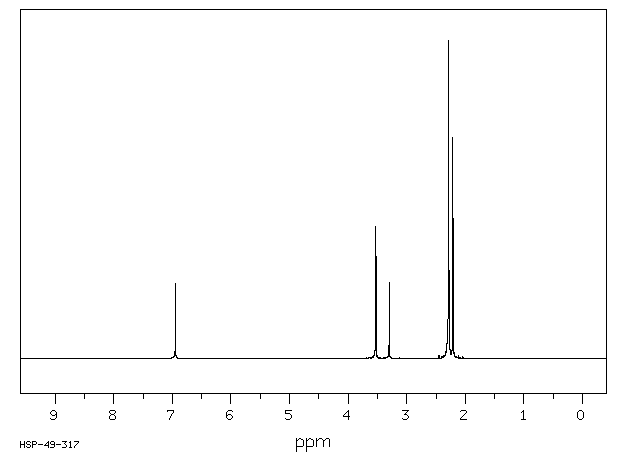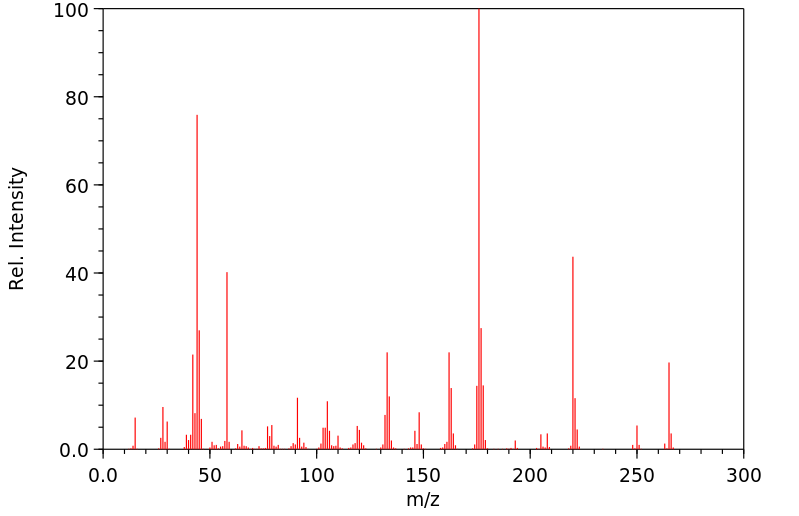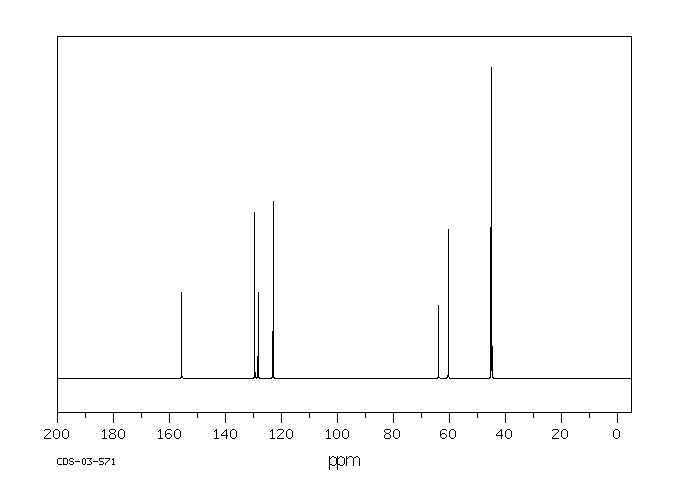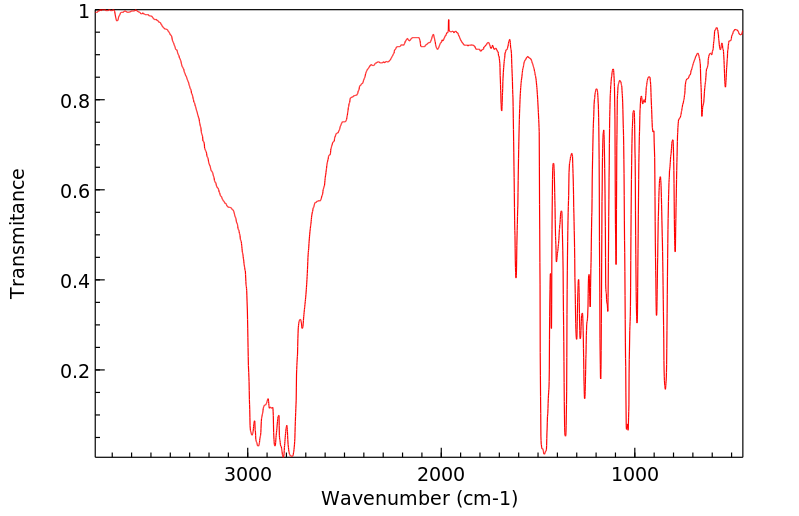毒理性
鉴别和使用:2,4,6-三(二甲氨基甲基)苯酚(三聚-DMP)是一种清澈、淡黄色、粘稠的液体。它用作室温固化环氧树脂的催化剂和共固化剂,也用作油漆硬化剂。人类暴露和毒性:一组工业画家被跟踪调查,以评估由于暴露于环氧树脂系统引起的过敏性接触性皮炎(ACD)的发生率。该研究持续了4年,包括2236名工人,贡献了5113人年。在57名接受贴片测试的工人中,发现23人因环氧树脂系统而患有ACD,表明发病率为每1000人年4.5人。4名工人(17%)仅通过对三聚-DMP、间-二甲苯-α,α-二胺(XAD)和/或2,2,4-三甲基己二胺的贴片测试被识别。7名工人的三聚-DMP贴片测试呈阳性,表明这种化学物质是工业画家的重要致敏剂。三聚-DMP对体外人类淋巴细胞的染色体无断裂作用。动物研究:大鼠通过皮肤接触三聚-DMP,剂量水平为0、5、25和125毫克/千克/天,每周5天,持续4周。治疗相关症状包括25和125毫克/千克剂量组轻微到中度的兴奋性和/或肌紧张。125毫克/千克剂量组观察到轻微到中度的红斑,偶尔伴有水肿和坏死。组织病理学检查发现,125毫克/千克剂量组的表皮出现中度到明显的细胞水肿变化和轻微的角化不全。25毫克/千克剂量组观察到轻微的细胞水肿变化,无角化不全。在发育研究中,大鼠在交配前两周、怀孕期间以及产后4天通过口服灌胃接触三聚-DMP,剂量水平为0、15、50和150毫克/千克/天。
在研究期间没有发生计划外的死亡,没有观察到毒性临床迹象。配对表现、生育能力或怀孕长度没有发现不良影响。15毫克/千克/天剂量的窝数据未受治疗影响。母体治疗对后代生长或发展没有不良影响,包括耳廓展开和表面翻正反射。所有治疗组的后代没有检测到治疗相关的宏观异常。对于父母代大鼠的生殖或附属生殖器官,没有观察到治疗相关变化。在50和150毫克/千克/天的剂量下,治疗似乎与较高的胚胎着床前损失有关,尽管随后对产后生存、生长或发展没有影响。三聚-DMP稀释在无菌水中,在含有和不含有代谢活化系统的条件下,使用S. typhimurium菌株TA1535、TA1537、TA98和TA100以及E. coli菌株WP2uvrA-进行的沙门氏菌-大肠杆菌直接平板掺入试验中,剂量范围为50至5000微克/平板,未表现出致突变性。在测试条件下,无论是否激活,三聚-DMP被认为对L5178Y细胞不具有致突变性。生态毒性研究:三聚-DMP对鱼类和水生无脊椎动物实际上是几乎无毒的。
IDENTIFICATION AND USE: 2,4,6-tris(dimethylaminomethyl)phenol (tris-DMP) is a clear, light yellow, viscous liquid. It is used as a catalyst and co-curing agent for room temperature cure of epoxides and as a paint hardener. HUMAN EXPOSURE AND TOXICITY: A group of industrial painters was followed to assess the incidence of allergic contact dermatitis (ACD) caused by exposure to epoxy resin systems. The study lasted for 4 years and included 2236 workers, contributing 5113 person years. Of 57 patch-tested workers, 23 with ACD caused by epoxy resin systems were found, indicating an incidence rate of 4.5/1000 person years. 4 workers (17%) were identified solely by patch tests to tris-DMP, m-xylene-alpha, alpha-diamine (XAD), and/or 2,2,4 trimethylhexamethylenediamine. Positive patch tests to tris-DMP were seen in 7 workers indicating that this chemical is an important sensitizer in industrial painters. Tris-DMP was non-clastogenic to human lymphocytes in vitro. ANIMAL STUDIES: Rats were exposed dermally to tris-DMP at dose levels of 0, 5, 25, and 125 mg/kg/day, 5 days/week for 4 weeks. Treatment-related signs and symptoms included slight to moderate excitability and/or hypertonicity in the 25- and 125-mg/kg dose groups. Slight to moderate erythema, occasionally accompanied by edema and necrosis, was observed in the 125- mg/kg dose group. Histopathology revealed moderate to marked hydropic change and slight parakeratosis in the epidermis in the 125-mg/kg dose group. Slight hydropic change without parakeratosis was noted in the 25-mg/kg dose group. In developmental study, rats were exposed via oral gavage to tris-DMP at dose levels of 0, 15, 50, and 150 mg/kg/day for two weeks prior to mating, during gestation and for 4 days postpartum. There were no unscheduled deaths during the study and no clinical signs of toxicity were observed. No adverse effect on mating performance, fertility, or gestation length was detected. Litter data at 15 mg/kg/day were unaffected by treatment. There were no adverse effects of maternal treatment on offspring growth or development including pinna unfolding and surface righting reflex. No treatment-related macroscopic abnormalities were detected in the offspring of all treatment groups.There were no treatment-related changes observed in the reproductive or accessory reproductive organs for parental rats of either sex. At 50 and 150 mg/kg/day treatment appeared to be associated with a higher level of preimplantation loss although there was no subsequent effect on post-natal survival, growth or development. Tris-DMP diluted in sterile water was not mutagenic in a Salmonella typhimurium-Escherichia coli direct plate incorporation assay performed using S. typhimurium strains TA1535, TA1537, TA98, and TA100 and E. coli strain WP2uvrA- over a dose range of 50 to 5,000 ug/plate in both the presence and absence of a metabolic activation system. Tris-DMP was considered to be non-mutagenic to L5178Y cells under the conditions of the test with and without activation. ECOTOXICITY STUDIES: Tris-DMP is practically nontoxic to fish and aquatic invertebrates.
来源:Hazardous Substances Data Bank (HSDB)










